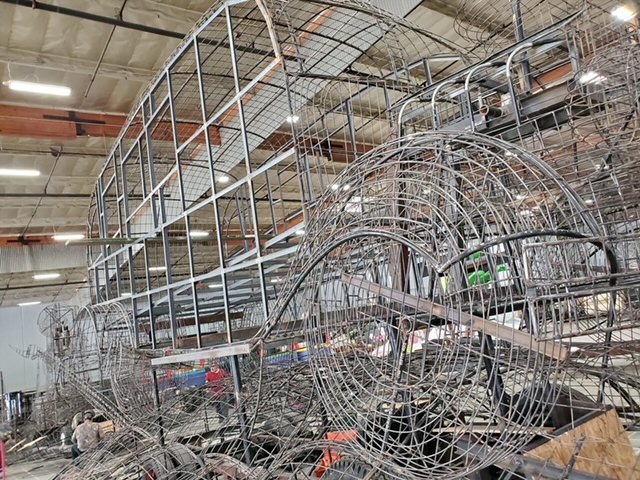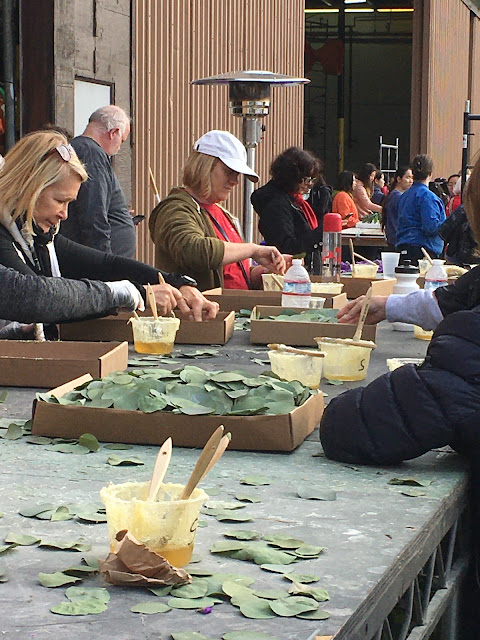One activity on my bucket list has been to decorate floats for the Rose Parade in Pasadena, California. So for 5 years we have been participating in gluing, tubing and pushing in flowers for a number of beautiful floats. So I thought I would share behind the scenes of the last days before parade day.
The Rose Parade features two types of float entries: floral-decorated sponsored by a participating corporation or community organization. Floats designs must be approved by the Pasadena Tournament of Roses Committee. Final Floats are approved in February and construction begins right away.
The first Festival of Roses Parade took
place in 1890 as a promotion for Southern California's sunny winter weather.
Today, most major floats are designed and
constructed by professional builders featuring high-tech computerized animation
and exotic natural materials from around the world. Each float costs between
$50,000 and $200,000 or more and takes up to a year to create. The floats are
built in large warehouses by professional florist and volunteers.
The
self-propelled chassis is the heart of the construction, but the mechanics
should not be visible. Even though it is the most necessary piece, the chassis
is ignored when the crowd watches the parade. A chassis can sometimes be
salvaged and reused for a new float, depending on the design. All of them are
built to support the structures that will eventually be covered in flowers.
The float is then sprayed with polyvinyl plastic liquid, and then painted generally in the same color that corresponds with the flowers that will be on that part of the float.

Barrels of dried goods from cranberry seed, rice,
soy beans, statice, pumpkin seeds and other dried goods.
3 types of glue are
used on most floats. One is similar to
Elmer’s glue for seeds, and ground flowers… another is a specially designed glue…
Similar to rubber cement that is extremely effective for gluing flowers and
won’t cause browning! And finally, a spray adhesive for those hard-to-reach
areas and things that are stubborn… like moving parts… they need extra stickiness! Builders will go through 125 gallons of glue
per float.
16 feet 6 inches… NO TALLER! All the floats have to travel under Highway to
reach the parade route… so all floats have to collapse to a maximum of 16 feet
6 inches. So many parts are built on giant pistons to raise and lower them
throughout the route!
On January 1, the
judges verify the awards for various categories before the parade starts. The
parade route covers 5.5 mi (8.8 km), and it takes about two hours for all the
floats to pass the starting line. More than one million line the route, many of
them having camped there all night to get good viewing spots.




































